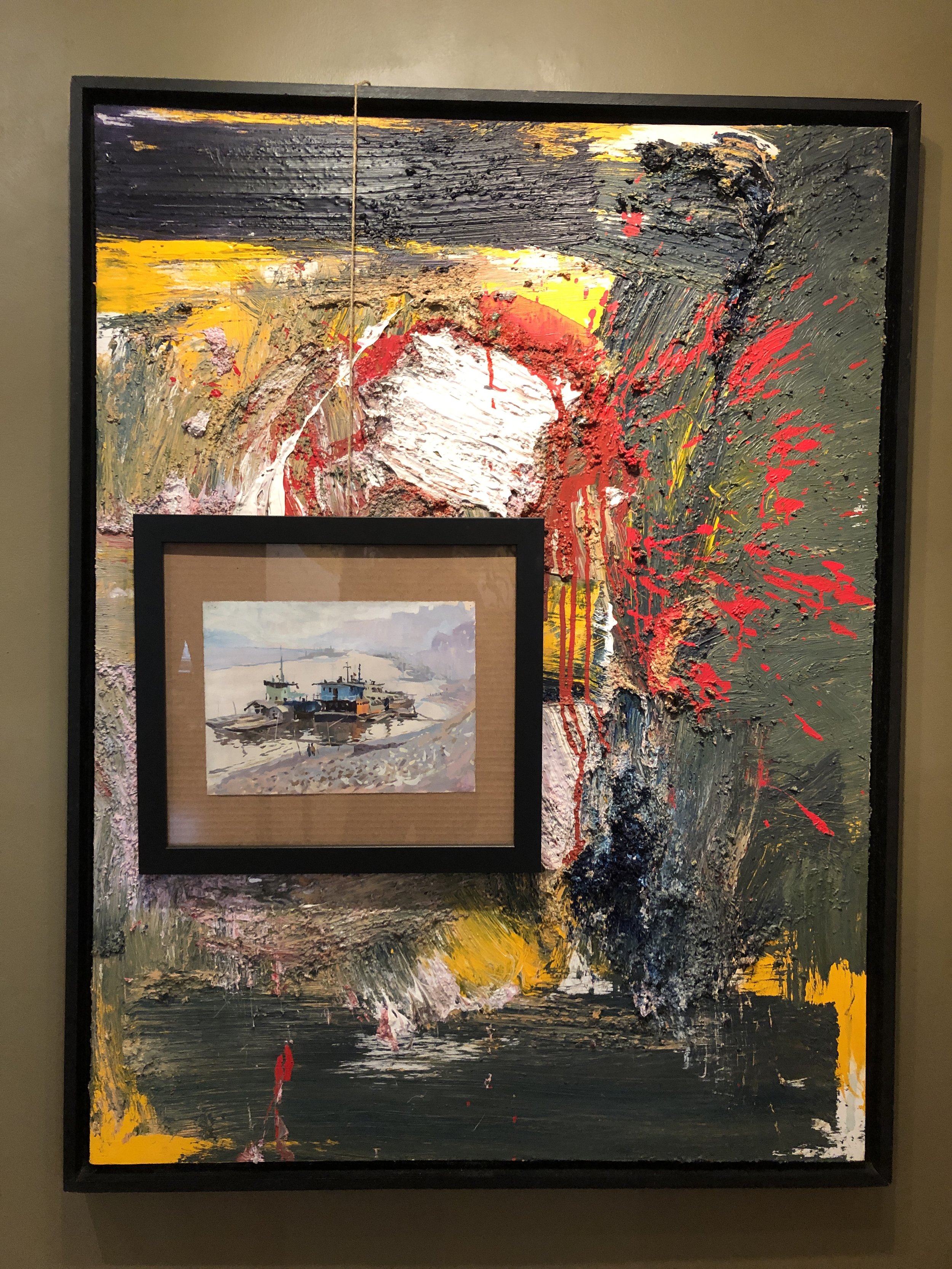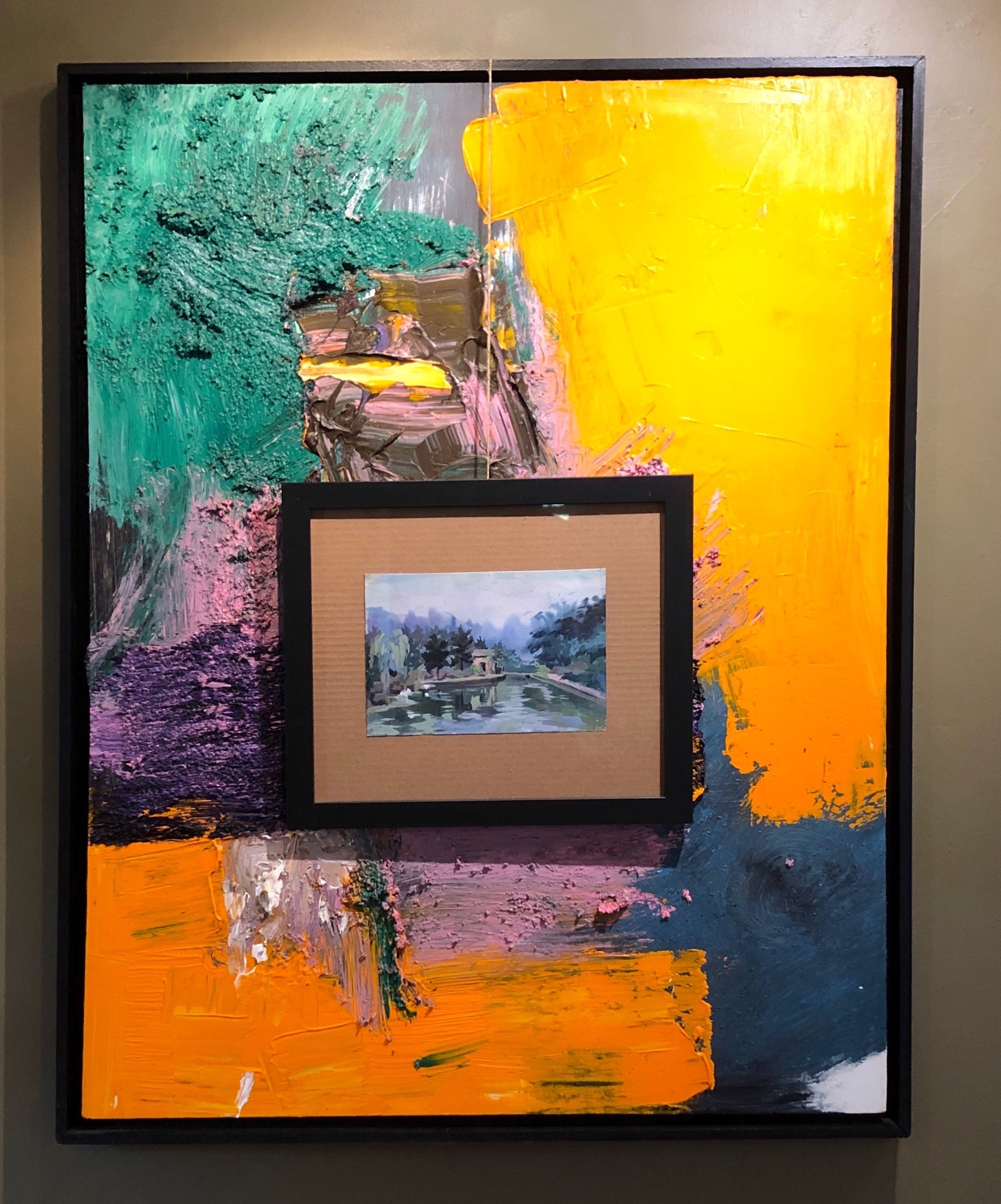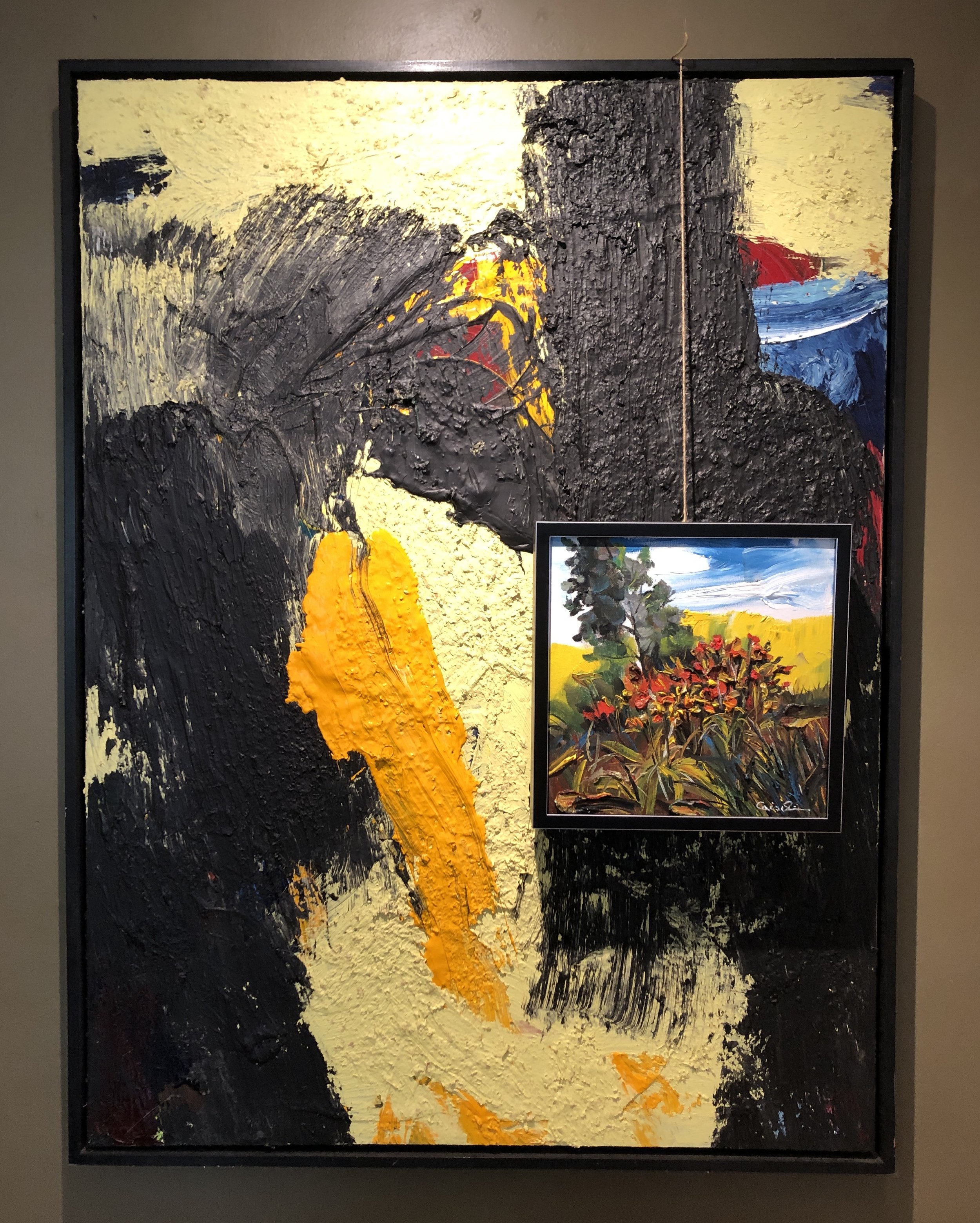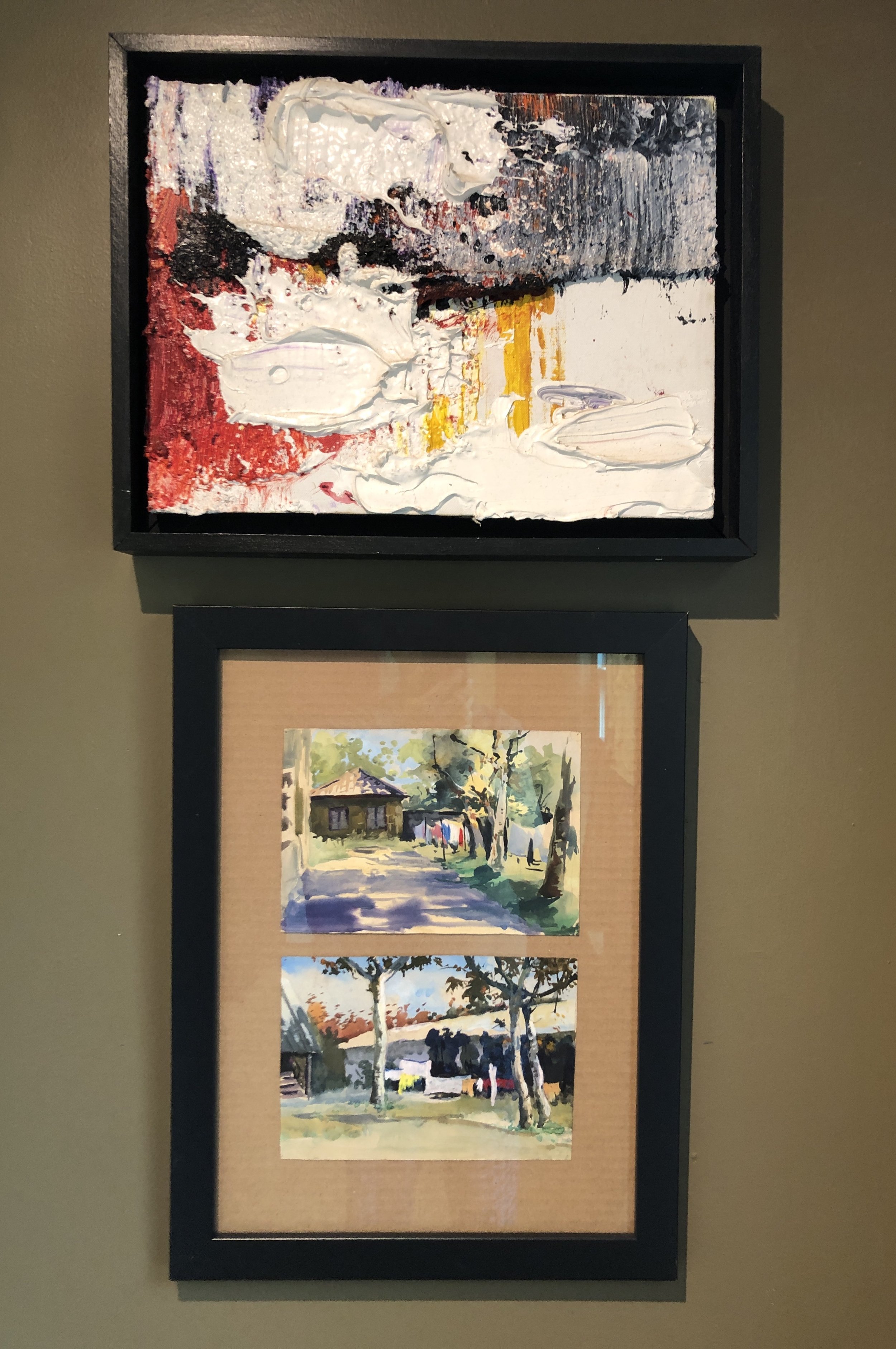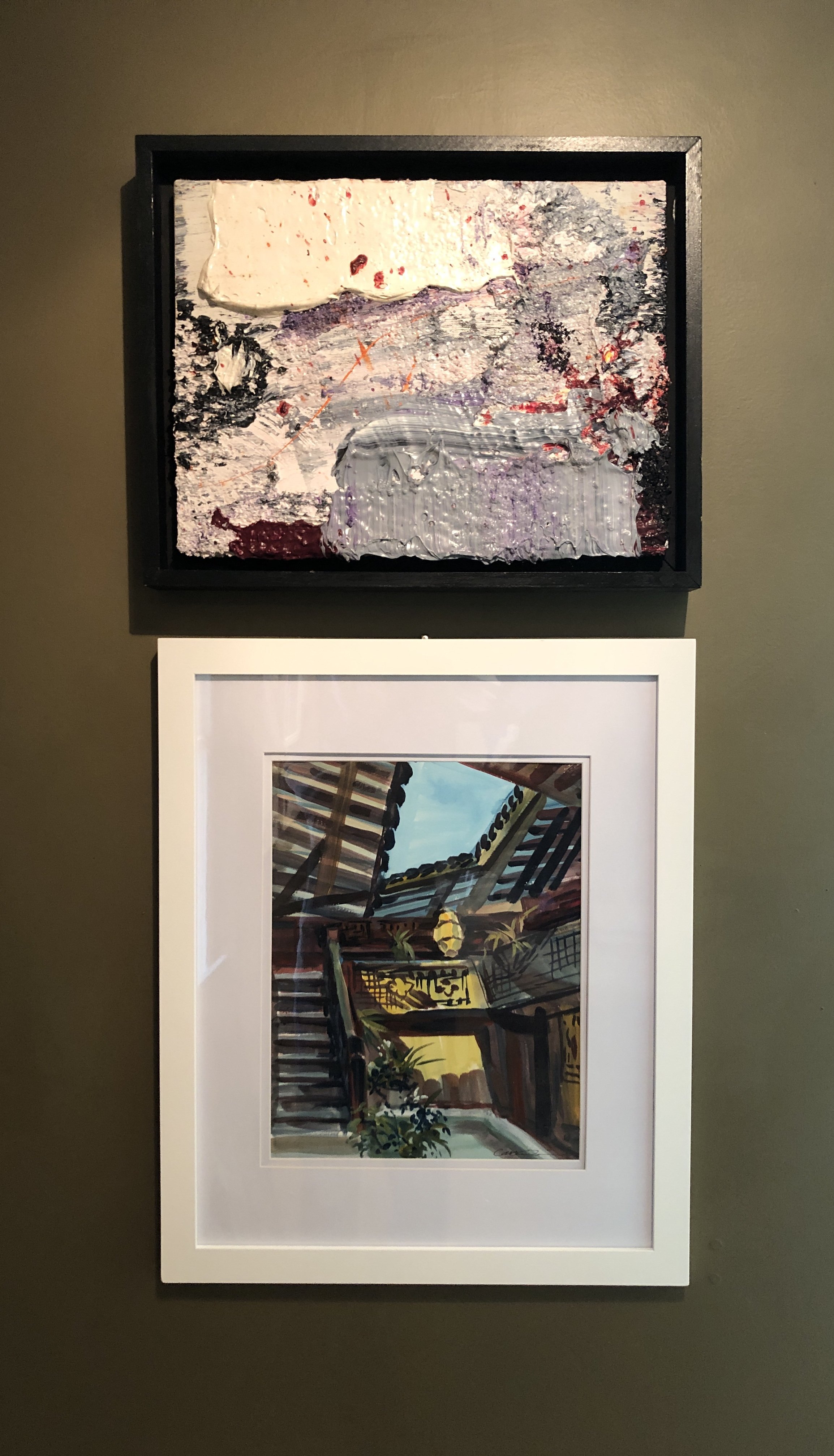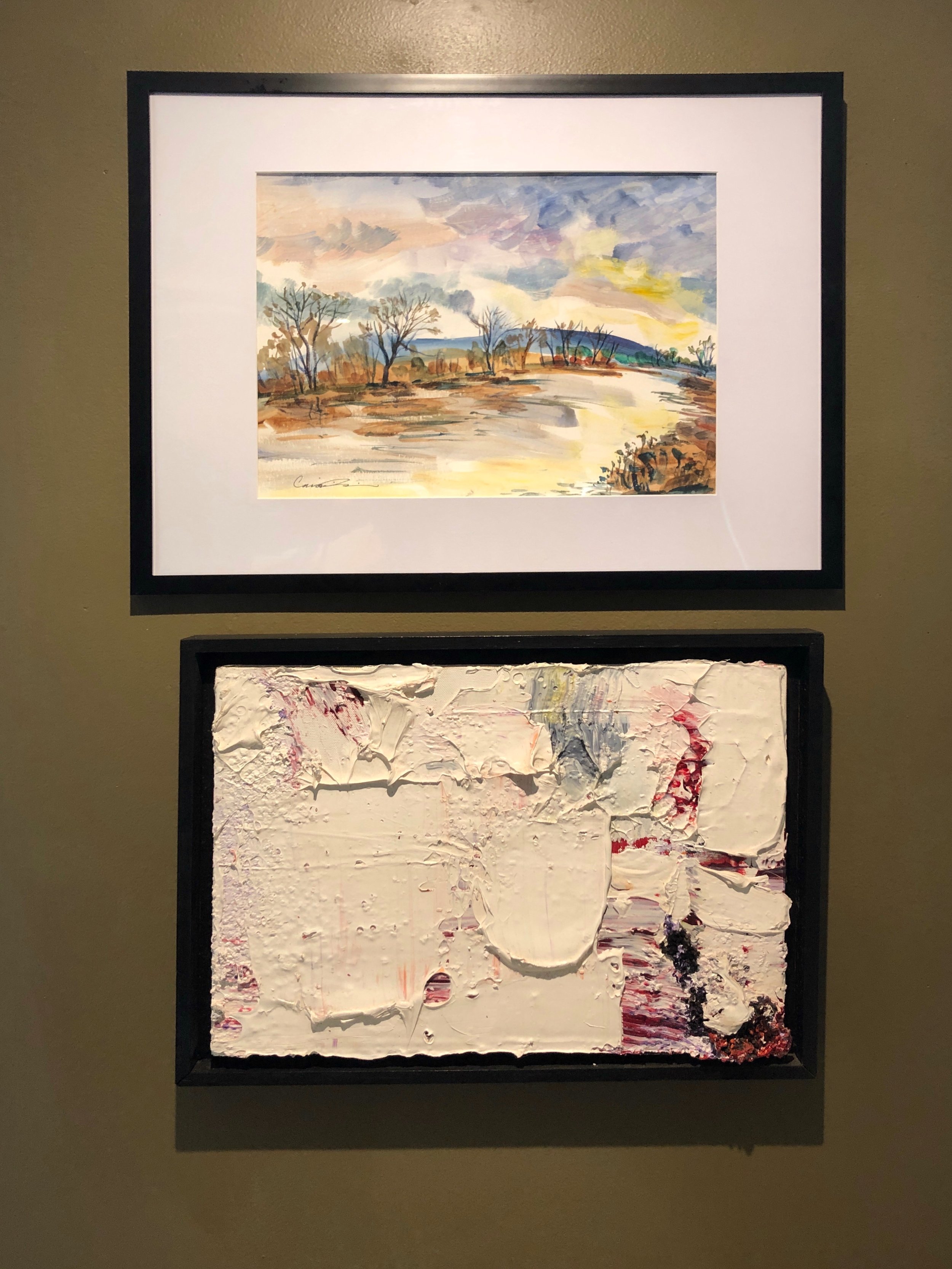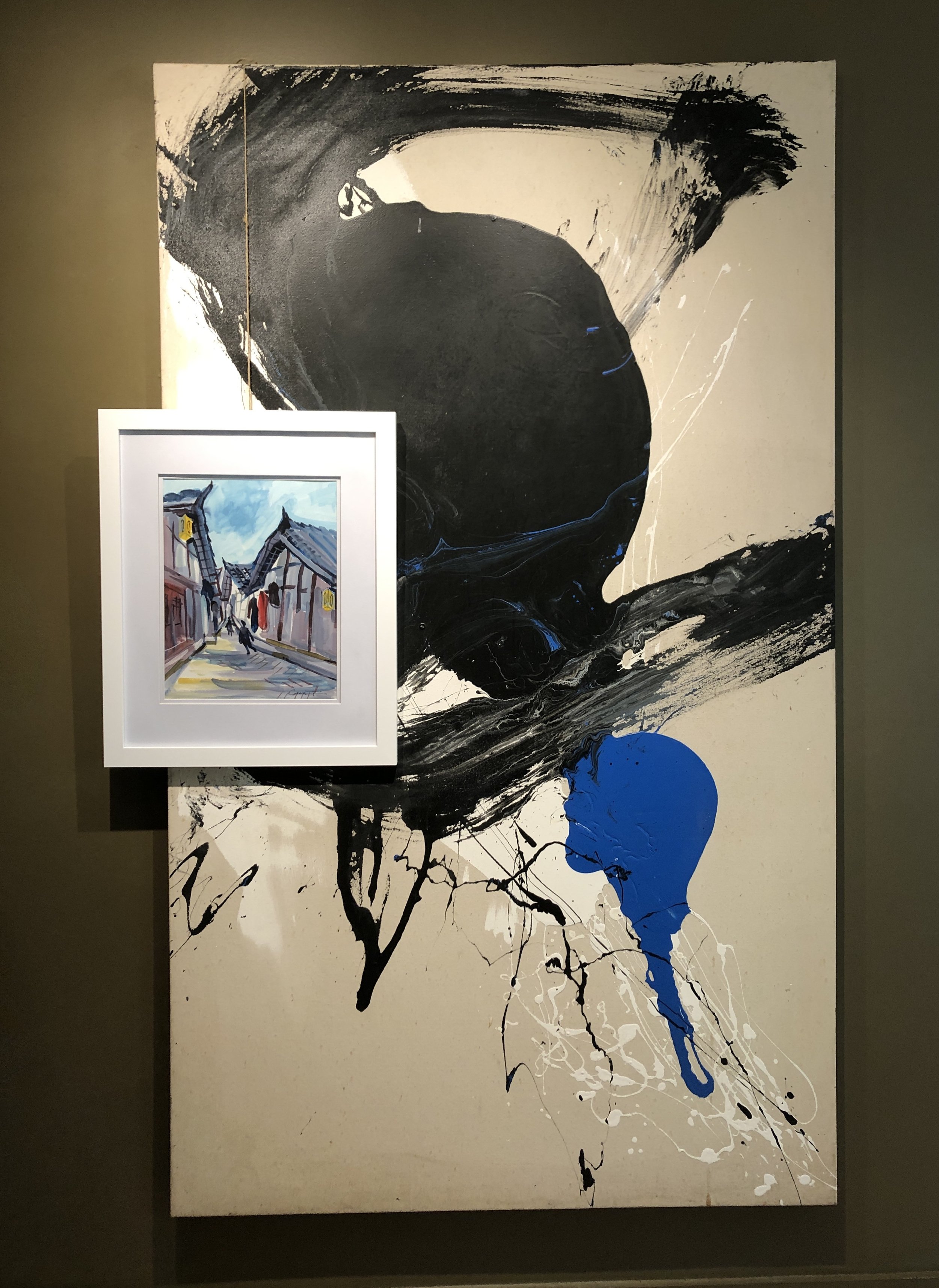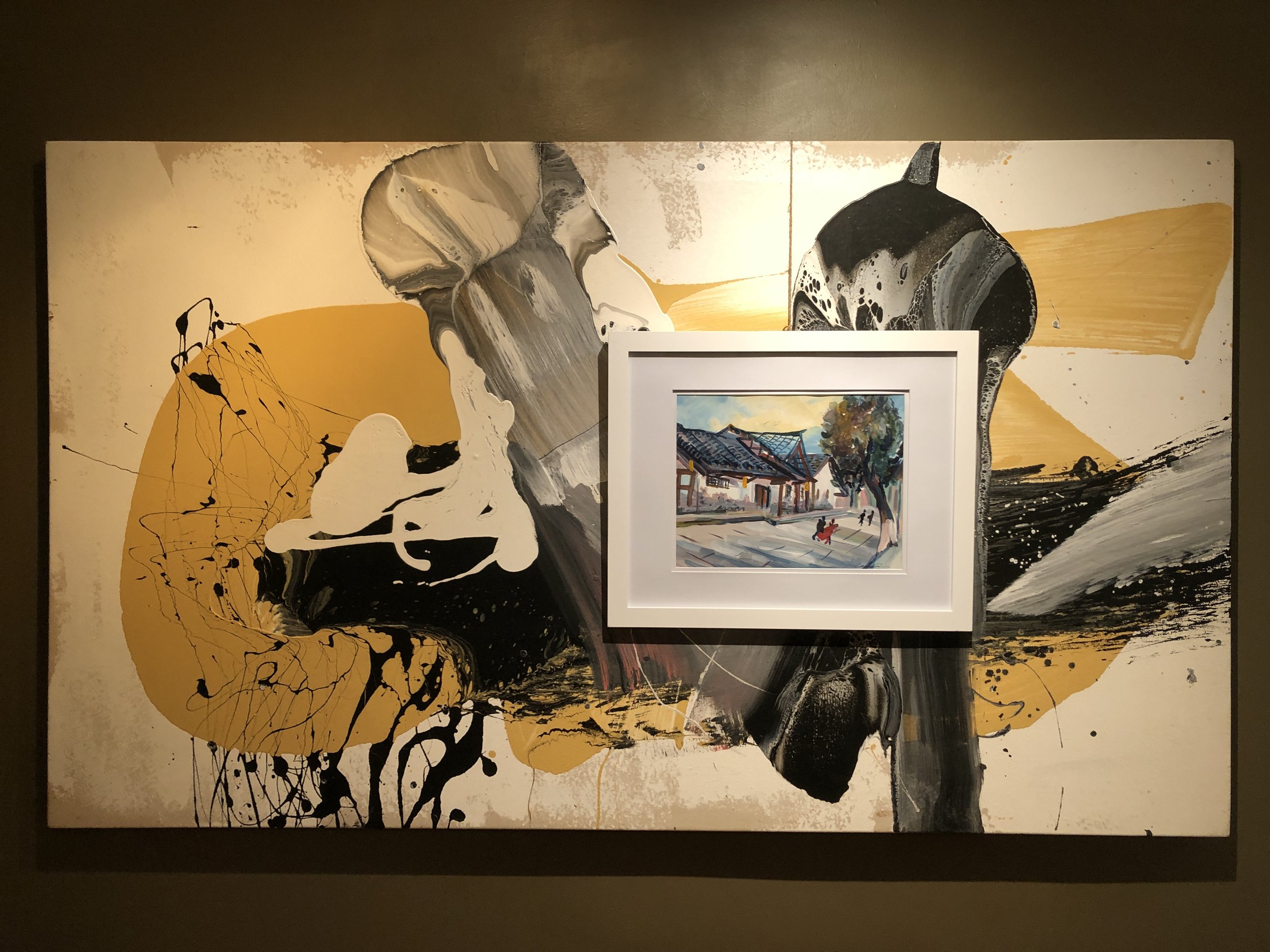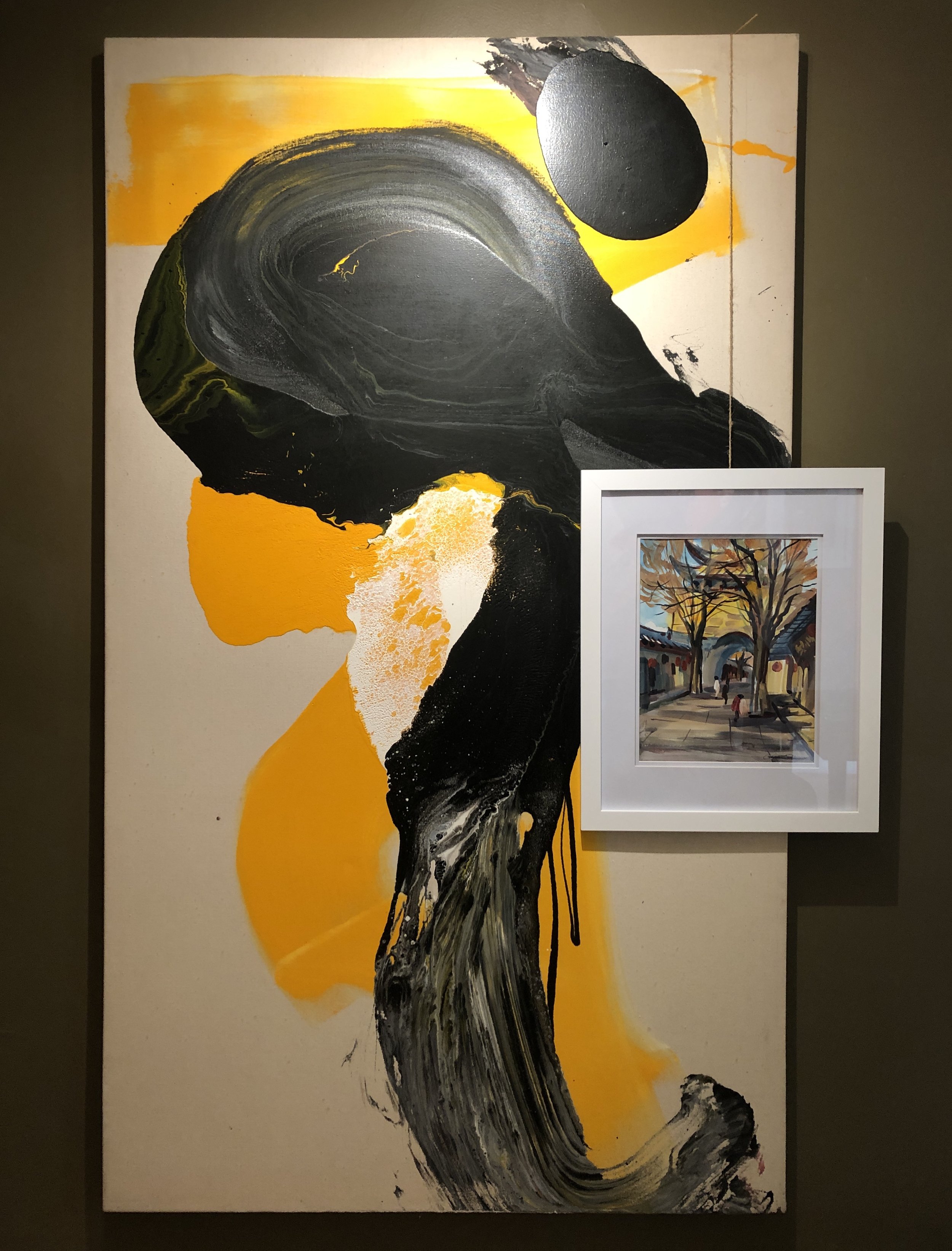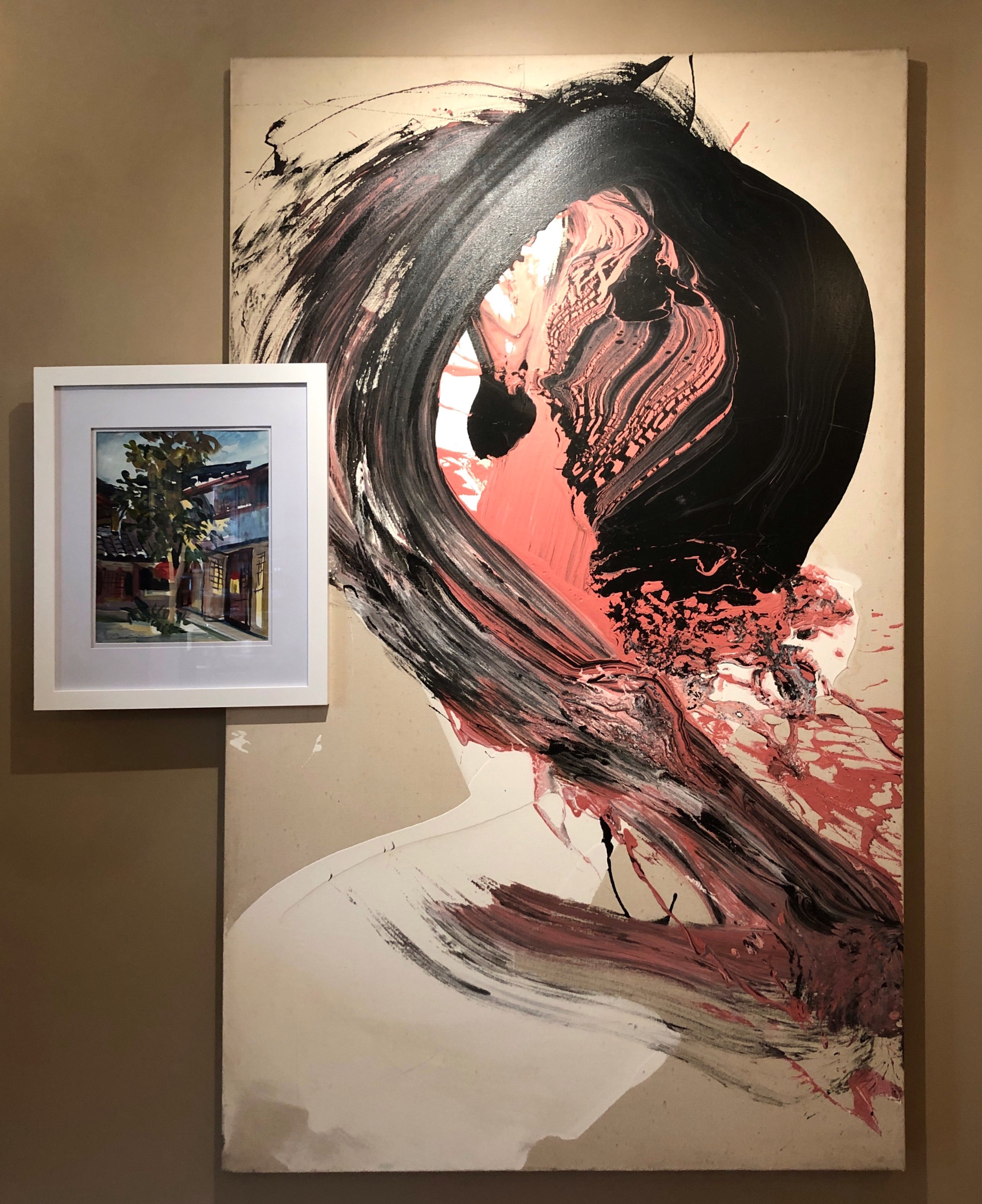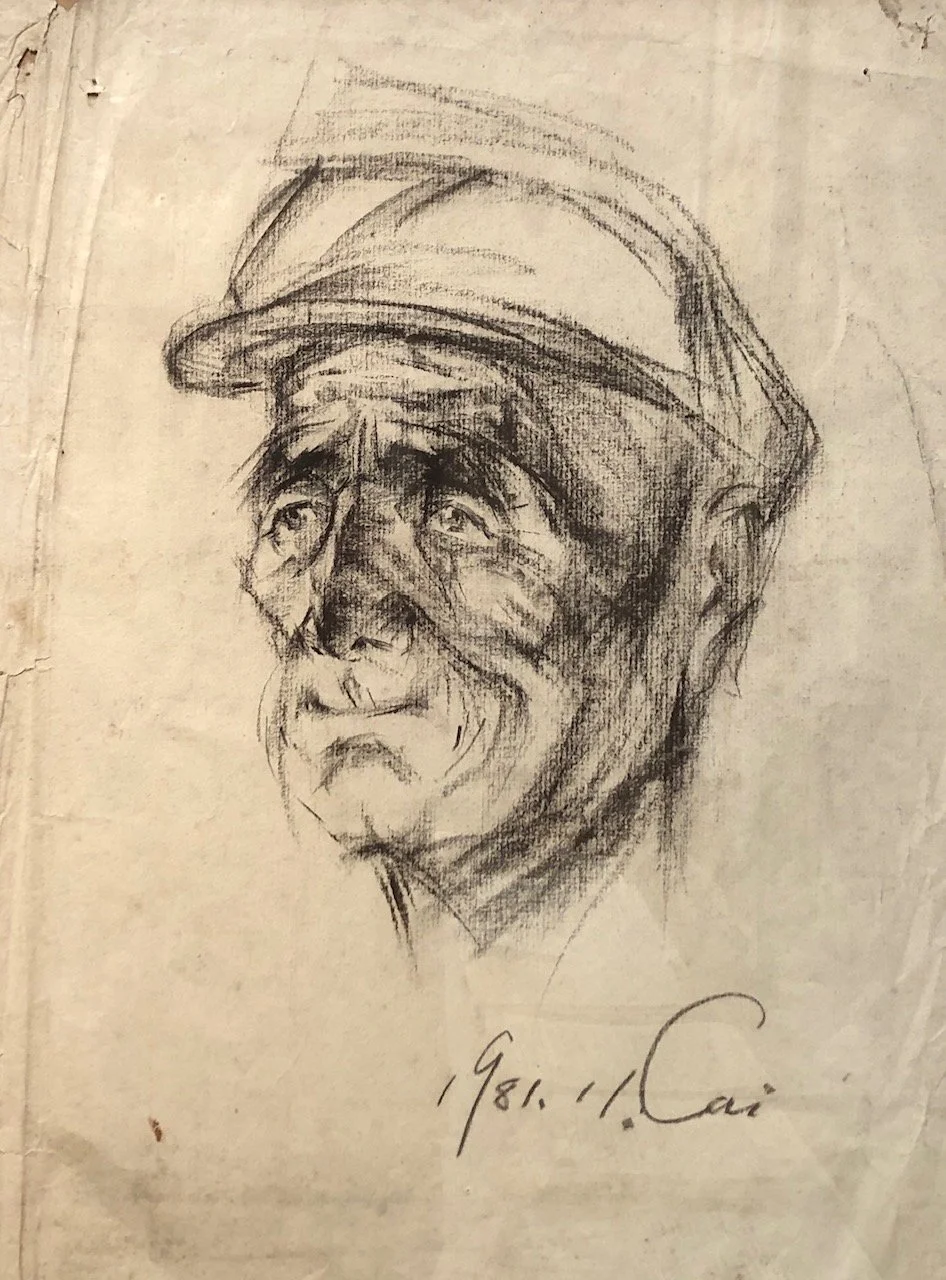
Cai Xi, Artist, Chef, Tai Chi Teacher Interviewed by Wendy O'Connell
Coming from a lineage of artists, Cai learned the disciplines of art from her father. She grew up in China during the Cultural Revolution, and came to America in 1987 where she found a new freedom of expression in her painting. She is the owner of CX Silver Gallery, Cai’s Dim Sum catering and teaches T’ai Chi on the Brattleboro Commons.
CAI XI 奚采 — THEN and NOW
Cai was in the first generation of art students after universities in China reopened after The Cultural Revolution. Her work traces a path from Sichuan Style in the late '70s with a palette intermingling hues that echo the surrounding environment, and the Shanghai style of the 80’s with color used straight from the tube, with bold and loose strokess, to the present day through a selection of landscape and abstraction.
In her early teens in the 70s, Cai studied under her father, a stage designer. An essential lesson that her father gave was to draw an egg 100 times and the result should be a 100 differences in emotional subtlety. Cai's meticulous studies had a realistic approach to the characteristics of the object and the relationship between light, shadow and surroundings. Through magazine pictures Cai had a glance at Impressionism and German Expressionism which opened her imagination in spite of no exposure yet to abstraction. Arriving in New York in 1987, Cai embraced the idea that art is possible everywhere and in everything.
Cai Xi - Works in China
1980s
-
“In the 90s, I derived inspiration from cement sidewalks, the subway walls and weathered buildings. Everywhere I went, I kept discovering painting in my surroundings. Surface and texture have been self-renewing areas of exploration. My mother's principle of Tong - Going Through, her word for 'leaving the body and changing bones' led to a greater transformation that is present with me. The Edge series is an experience of stepping into and out of myself.
I was painting as a cement worker or a cleaner, using trowels and brooms, as if I was leaping, jumping, reaching, stretching across the canvas. The Wu Ji (Infinity Within) series attunes to the concept of qi-yun ‘flow of energy into balance’ which is not just movement but also related to the vitality of the state of mind, the interaction of the painting medium, the forms depicted and the painting surface. Calligraphy and Not-calligraphy at the same time.
“For me, Art is about Paradox: appearance-disappearance, nothingness-wholeness, chaos-groundedness, emptiness-substance, movement-fixity. This is Tao. That is being in the present. I appreciate the 17th century Mustard Seed Garden Manual of Painting which emphasizes the close relationship between painting and calligraphy and the traditional view that painting is not a profession but an extension of the art of living.
Since 2001 living in Vermont, inspired by the majestic Vermont landscape. My Earth & Sky series is in homage to Mother Nature's teachings. I have come to realize that my ego and style are not important. I just stop, listen and contemplate Nature as I am painting."
-
Even in the 1980s, Cai responded to assignments and creative practice with determination and joy. Already schooled in studio practice, she responded with strong, deeply-felt portraits that are already masterly and indications of fierce talent. She has a way of literally throwing her body, mind and soul into her painting, a method which results in passionate/poetic communications.
Cai’s college teacher in early 1980s China said, “Wherever you go; don’t give up an opportunity to learn and be inspired.” I am thinking about how that teaching method has resulted in her present practice of not only making her home an art-life center of creativity via food as art, communication as art, dealing with life issues with others as art but also her Putney School experience of taking her students to China, sort of duplicating her teacher’s axiom of going to the source!
As artist-teacher, she continues her teacher’s courage to go into the unknown to create and find inspiration. Her sensitivity is always shared, never ego-bound, but stirring inside and shining so that those close to Cai are taught by her focused art-light. Listen to what she says, a story of healing: “Then I realized that I had put myself in danger and that gave me a feeling of shock. I took that shock and started painting.”
This is a good life-art recipe, and a way to transfer pain into gain, into healing, into knowledge, a way that she practices, even now. She is a masterful artist/lifeist. Thank you, Cai, for your strong brush strokes; for your ability to translate persons to paint; for your courage to travel to the site of your vision.
-
Sometimes, you have to pass through a gallery, looking, smelling – almost touching – works of art, taking them in, in a very physical way, and then you step away and let the effect wash over you, feeling the pieces, sequentially, as waves of an ocean surge and ebb, pulsing, receding, for a long time after you have left the scene. Later, wanting to reconnect, you come to the work again with a whole new body – new eyes, for sure. It enters your consciousness with a different, sensuously powerful energy; and before you know it, you are swept along in the hypnotic dance of qi gong, discovering, in yourself, the steps the painter took when the painting was made.
Landscapes take us to both times and places in China, long ago. Cai’s recent venture into socially engaged art – cooking, performances, experiences, installations – seems like a radical departure from all this, but in fact, it is a natural outgrowth, in a life that has seen enormous changes, emerging out of China’s Cultural Revolution, transplantation to the States an alien culture, a new language, parenthood, teaching, food catering, tai chi and participation in a free-wheeling, mind-expanding MFA program, all at the same time. The Pink Slip Project 2012-14, Art-as-Food-as-Art, and Our Meal Table are evidence of a greater perspective, in which Art-is-Life-is-Art. Like her work, Cai is never finished, never still even for a moment. But whether her work takes her to the kitchen, the canvas, the tai chi practice, the classroom, or the street, this warrior woman finds still-points, reflections, and time-warps to share with us, wherever she goes. Cai’s life and work give credence to a line from an old song of the 60’s, “Time keeps on slippin’, slippin’, slippin’ … into the Future.” Dance on, Sister Cai!
-
My mother, Cai Xi, is objectively the most hardworking, versatile, and technically proficient painter I have ever known. Cai has lived a tumultuous, cross-cultural life, reflected in her enormous body of work that spans over decades in China and the US. She has created hundreds of paintings, each a visceral snapshot of her body, mind, and heart over the course of her journey. Her work has, for almost my entire lifetime, been hidden away in storage, where they’ve been collecting dust and seen only by my family. Finally, Cai is revealing the Then and Now exhibition where abstract works interact, juxtaposed with realistic landscapes, created from the late 70s to now, meeting to form a bold synthesis of her life. No one more deserves to be seen in this way.
My mother has been more than a mother to me. She is a mentor and role model. She has inspired me to be a quiet, thoughtful leader and leads by example. She has overcome tremendous obstacles and adversity with grace. She has taught me that art is a life long gift that enriches and expresses the human spirit – a lesson I have used to fuel my own craft. I can only begin to say how lucky I am to grow up with my mother and her art coloring our house. Her paintings and her presence have forged my life, and they can change yours too. I wish I could be there in the room to witness this presentation of my mother’s legacy in all its grandeur, but I hope you’ll do that for me. Much love from California and Edinburgh


